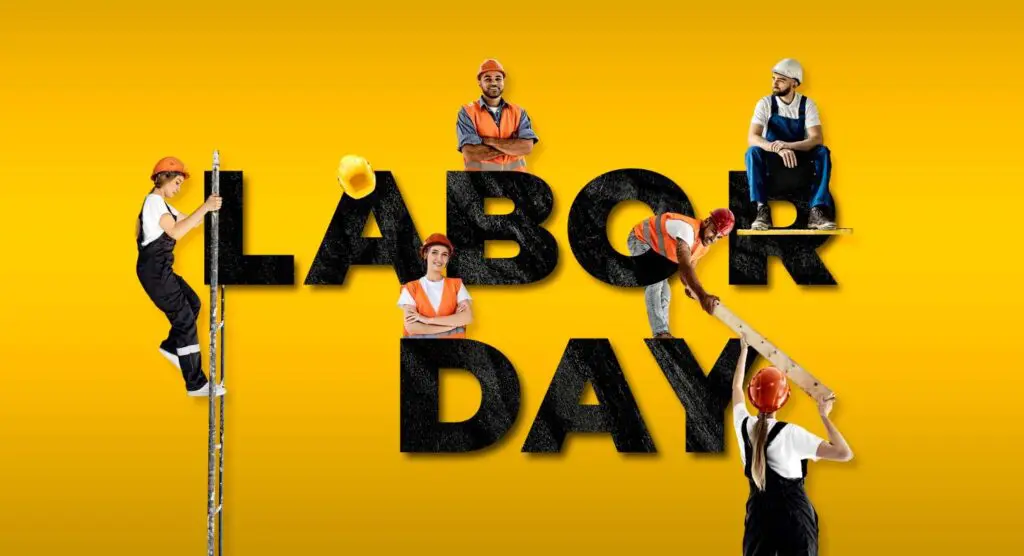Summary
- Most of the countries celebrate Labour Day on 1 May, but Canadians do it on the first Monday of September.
- Just over a century ago, most workers in the world used to work 10 hours to 16 hours a day.
- Child labour was not only common but even protected under factory laws.
- Whether it is paid vacations, minimum annual paid leaves, or pension schemes, every kind of employee benefit that you can enjoy today has a long workers’ struggle behind it.
- Let us keep in mind the struggles and sacrifices of those workers who lost their lives for the cause of labour rights.
Every year, Canadians celebrate Labour Day on the first Monday of September. It is a public holiday all over Canada, and naturally we all love it as it gives us a long weekend to enjoy with our friends and family.
However, if you go back in time to its history and connect the dots to our everyday lives today, you will be surprised to note how much this day has given to us – we as modern-day workers.
Today, most of us work 8 hours a day, enjoy compulsory annual leaves, and other job-related benefits and think that this has been the norm forever, right? But many of these benefits are a relatively new phenomenon. Just over a century ago, most workers in the world used to work 10 hours to 16 hours a day; child labour was not only common but even protected under factory laws.
History of Labour Day in Canada
Canada declared Labour Day an official holiday after a long and agonizing struggle of workers for over two decades. Canadian workers, just like workers in other countries, continued to protest against the long working hours and to make union activities legalized. Many Canadian workers lost their jobs and faced legal cases from their employers as union activity was still illegal under Canadian law.
The event that changed the course of history happened in 1872. Toronto Typographical Union (TTU) demanded a 9-hour workday; however, when the employers refused to accept the demands, the workers went on a strike on March 25, 1872. During those times, printing workers in Toronto used to work 12 hours a day and 6 days a week. The protests continued to take place in Toronto, and on April 15, 1872, about 10,000 came on the streets – a big deployment as Toronto’s population at that time was just 50,000, according to the Professional Institute of the Public Service of Canada (PIPSC).

Workers started protesting in other Canadian cities, one such protest in Ottawa also caught the attention of the federal government. These parades became an annual event in Toronto and other cities and even inspired an American labour leader, Peter McGuire – the founder of the Carpenters’ Union and the American Federation of Labor. McGuire was invited to speak at a parade in Toronto in 1882, and when he returned to the US, he organized a similar event in New York City on September 5, 1882.
For over two decades, workers in Canada and the US continued to face police crackdowns, lawsuits, and even lay down their lives, but they did not retreat from their demands. On May 4, 1886, a violent clash between workers and the police resulted in the death of several workers, which became a global symbol of the international struggle for workers’ rights. The event became so important that May 1 was declared International Workers’ Day in 1889, and today it is celebrated all over the world.
Finally, in 1894, the US government accepted workers’ demands for better working conditions and declared an official holiday on the first Monday of September. Canada also followed and announced a federal holiday in the same year.
However, what is noticeable is that US President Grover Cleveland still wanted to avoid May 1 as Labour Day because socialist parties in Europe had been celebrating it as International Workers’ Day. Today, most of the countries celebrate Labour Day on May 1, but a handful of countries like Canada and the US celebrate it on the first Monday of September.
What Labour Movements Have Given to Modern Workers?
Whether it is paid vacations, minimum annual paid leaves, or pension schemes, every kind of employee benefit that you can enjoy today has a long workers’ struggle behind it. Many of these labour day struggle movements have their roots in the nineteenth and twentieth centuries, when Europe was witnessing rapid industrialization.
Some countries started legislation for employee benefits earlier than others, but the learning and relearning continued, and today we know most countries legally provide employment benefits to workers in one form or another.
Despite so many achievements at the global level, there are still many developing countries where workers do not even get basic facilities and employment benefits. However, all the member nations of the United Nations agree that all workers should have basic facilities under different universal declarations.

In 1919, the International Labour Organization (ILO) came into being as part of the Treaty of Versailles, which was signed after World War I. The world leaders who gathered in Paris to sign the treaty realized that there could be no sustainable development without social justice, that is, justice in relation to the distribution of wealth and opportunities in the world.
When the United Nations was founded in 1945, the ILO became part of it so that labour laws could be implemented in all member countries. Due to the pressure of workers’ campaigns around the world, the 8-hour work day was the first topic that was picked up by the ILO, and it resulted in the Hours of Work (Industry) Convention, 1919.
The ILO celebrated its 100th anniversary in 2019 with the commitment that it will continue to work to improve the working conditions of workers all over the world. This shows that the recognition of the importance of labour rights, workers’ well-being, and equal opportunities for all did take over a century, but it surely got gradual acceptance in different parts of the world.
Today, there are several countries in the world that are experimenting with a 4-day week. The demand for a shorter workweek gained momentum mainly after the pandemic. In February 2022, Belgium became one of the first countries in Europe that allowed employees to work four days a week.
However, this does not mean that employees are working less or they face any loss of salary; they are just condensing the work load of five days in four days. More and more companies are now coming up with data that a 4-day week not only helped improve their productivity but their workers’ satisfaction has also increased.

In Canada and the US, an overwhelming majority of workers are also in favour of a 4-day week. For instance, a massive 92% of workers in the US are in favour of a 4-day week, according to a survey by cloud-software vendor Qualtrics. Similarly, over 79% of full-time Canadian workers are also in favour of a 4-day week, according to a survey by Maru Public Opinion.
The basic idea behind all these pilot projects in countries like Iceland, the US, the UK, Germany, and Portugal, etc. is to improve work-life balance and the overall well-being of the workers. Both companies and the governments are recognizing the fact that the improvement in work-life balance of workers will directly translate into higher Gross Domestic Product (GDP). The 4-day work week is slowly gaining traction, but it may take some time before it is fully accepted in most countries of the world.
Conclusion
The struggle that the workers of Toronto started over 150 years ago did change the course of history. They did not achieve their target in the short term, but in the long term they were successful on so many fronts.
Today, most of us enjoy several employment benefits, and it was all made possible due to the struggle of those workers who dreamed to improve their working conditions. Let us keep in mind their struggles and sacrifices on this Labour Day.
Read more industry-related blogs here.
Graphic is by Freepik











